My childhood self never owned a Barbie doll. Instead it was her British-made rival Sindy that I loved with a passion, from her sleek blonde chignon, sugar-pink tutu and hot-pink ballet slippers to the distinctive magenta-pink-and-black, heart-shaped Sindy logo that featured so prominently on the packaging. Too many years later, I still remember her with fondness.
My relationship with the colour pink is more muddied. I can’t, for example, remember the last time I wore pink, probably as a result of growing up in the goth-post punk era of the 1980s when dark colours equalled cool. I’m also, to my eternal shame, still slightly taken aback when I see a man wearing pink, almost certainly a leftover of growing up in an Ireland that’s very different from today.
Conversely, while I love most shades of pink in the garden, I’m often surprised by the number of people who dislike it. For example, I have gardening friends, male and female, who avoid growing plants with pink flowers on the basis that it’s too cloyingly “girlie” a colour, others who consider it too “in your face”, and then those who regard it as a bit cliched. Pink, it seems, is the colour of contradictions.
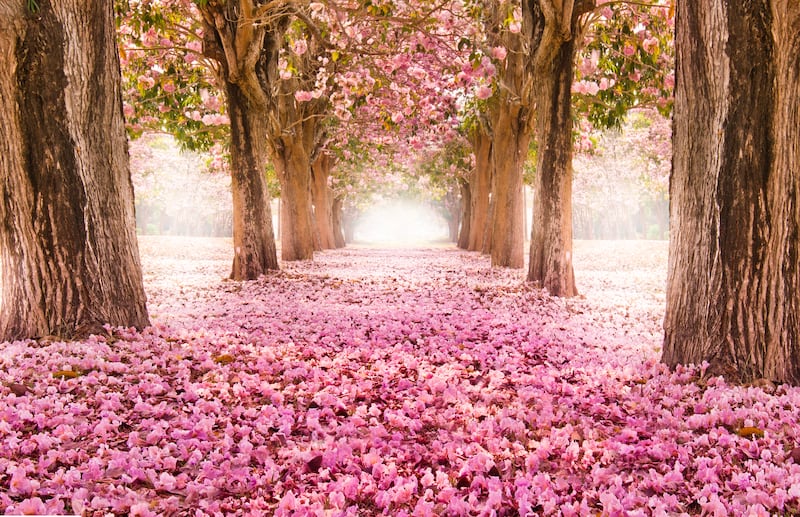
Myself, I like most shades of pink in the garden except those with an obvious cold blue cast, which can be tricky to place well. In the late spring garden, for example, there’s nothing lovelier than Digitalis ‘Sutton’s Apricot’ with its tall, graceful spires of pale apricot-pink, bell-shaped flowers, or the shimmering pink flowers of Tulip ‘Apricot Beauty’ or ‘Belle Époque’. Likewise in the summer garden I can think of nothing prettier than the giant, luminous, golden-pink blooms of Paeonia ‘Coral Charm’ or the honey-pink flowers of Rosa ‘Penny Lane’.
READ MORE
Despite its reputation, pink is also a surprisingly versatile colour. Depending on its intensity, for example, it can act as a glue between white, cream and shades of pale blue and lilac (think pale pinks) or give an almost electric jolt of energy to a planting scheme when combined with bright orange, deep blue or deep purple (think vibrant shades of fuchsia and raspberry pink).
It’s at this time of year that pink can also really come to the fore, enlivening the early autumn garden in a way that no other colour does. Unconvinced? In what might very well be a doomed attempt to persuade the gardening world’s rhodophobics of the error of their ways (yes, there’s even a word for people with a horror of pink), I’ve composed a little shortlist (see below) of some of the most loved pink-flowering plants of the autumn garden. See you on the other side.
[ Pretty in pink: How do they put the colour in rosé wines?Opens in new window ]
[ In a Word ... PinkOpens in new window ]
Nerine bowdenii: Not for the faint hearted, I can’t think of a more in-your-face Barbie pink than the showy, exotic flowers of this bulbous, drought-tolerant perennial and its new, glamorous offspring, Amarine tubergenii, which is a cross between a nerine and an amaryllis. Both need a sheltered spot and a moist but very free-draining, fertile loamy soil in full sun, where their fleshy bulbs can gently bake on hot sunny days. For those gardeners who’d prefer to ease themselves gently into the world of pink, paler varieties are available including Nerine ‘Lipstick’ and Amarine ‘Emanuelle’.
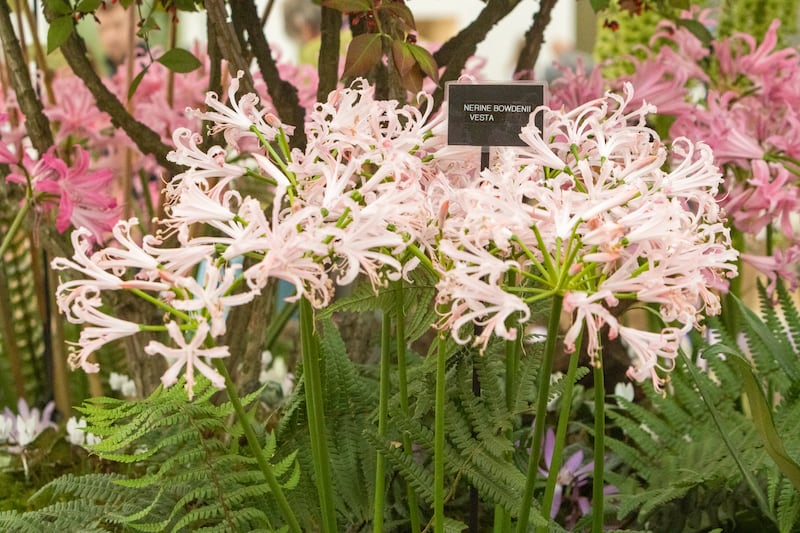
Echinacea pallida: Even the sternest rhodophobe would struggle to dislike this elegant, oh-so-refined species of coneflower, which blooms from July-September. Each tall, sculptural flower is a thing of painterly beauty, with slender, strongly reflexed petals surrounding a central golden-brown boss or ‘eye’. Happy in all except the driest or wettest soils, this pollinator-friendly herbaceous perennial combines beautifully with ornamental grasses but needs protection from slugs and snails when emerging in spring.
Dahlia ‘Preference’: A wonderfully decorative, versatile and floriferous semi-cactus variety of dahlia with rain-resistant, luminous peach-pink flowers that appear abundantly from July until the first harsh frosts, Dahlia ‘Preference’ is one of the new bright stars of the dahlia world. Like all dahlias, it needs a rich, moist but free-draining soil in full sun or very light shade and some protection from slugs and snails when the young shoots are emerging in spring. In cold, wet gardens, the tubers should be lifted and stored in a frost-free shed over winter.
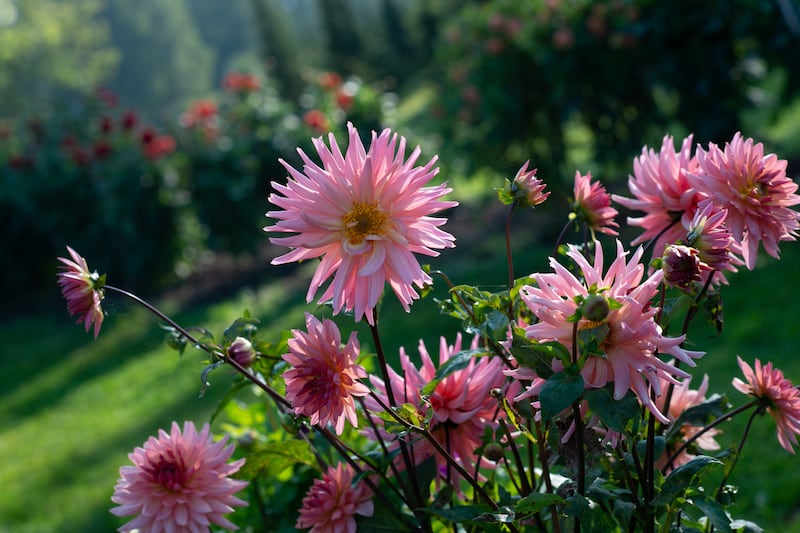
Oenothera lindheimeri ‘Whirling Butterflies’ (formerly Gaura lindheimeri): A must for the summer-autumn border, this tall, hardy, drought-tolerant herbaceous perennial is covered with small, pale, starry pink-and-white flowers for months on end. Just make sure to give it a spot in full sun and a moderately fertile, moist but free-draining soil.
Anemone x hybrida ‘Queen Charlotte’ (also known as ‘Königin Charlotte’): A stalwart of the late summer-autumn garden, Japanese anemones are impressively long-flowering, resilient herbaceous perennials that are perfect for a spot in light shade or full sun, with graceful, long-lasting daisy-like flowers that appear on tall, strong, slender stems. This variety is known for its golden-eyed, pale-pink, semi-double flowers. All Japanese anemones like a cool, rich, moist but free-draining soil.
Euonymus ‘Red Cascade’: The vibrantly colourful, long-lasting autumn fruits of this hardy variety of spindle, which persist on the plant even after the leaves fall in autumn, are living proof that hot pink and bright orange make a great combination. A small deciduous shrub that’s also prized for its autumn foliage colour, it likes a position in full or light shade and a moderately fertile, moist but free-draining soil.
Cosmos ‘Dazzler’: A plant whose acid-pink flowers some find hard to stomach, but you can’t beat this hard-working, short-lived, half-hardy annual for the sheer intensity of colour and quantity of flowers that it produces from July until the first killing frosts. Beloved by bees and butterflies, it’s a nature-friendly showstopper easily raised from spring-sowed seed that likes a moderately fertile, moist but free draining soil in full sun.
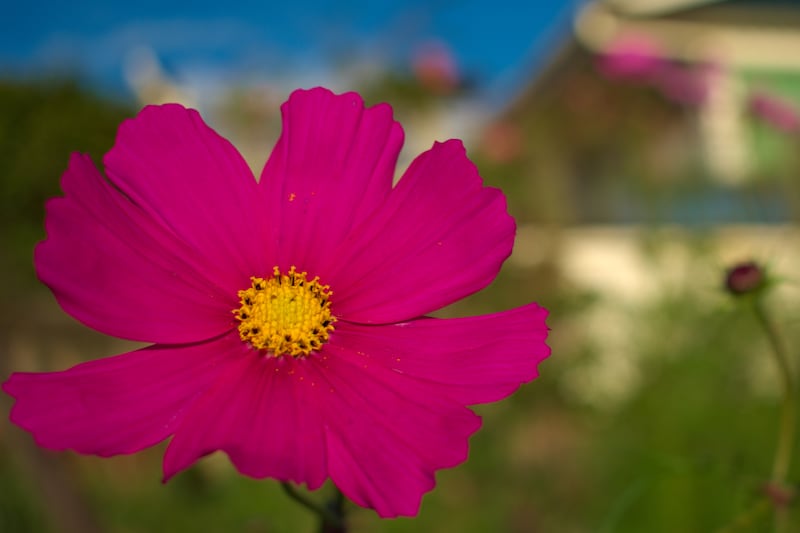
Hydrangea: Okay, so I admit to not being the greatest fan of the retina-scarring, shocking pink varieties of mophead hydrangeas that scream out to passersby from some front gardens at this time of year, while I’m still on the fence as regards the fandango-pink flowers of Hydrangea ‘Pink Annabelle’. But despite its awful name, I do like the subtler charms of the baby pink-flowering Hydrangea arborescens ‘Candybelle Bubblegum’. This large, deciduous shrub needs a sheltered spot in full sun or light shade and a moderately fertile, moist but free-draining soil.

Colchicum ‘The Giant’: Autumn crocuses are my own personal Waterloo when it comes to a dislike of pink flowers. Try as I may, I find them creepy and a little mushroom-like in the way that their short, squat, mauve-pink blooms emerge from the ground without leaves. But many others love their ability to light up the garden in September-October. A hardy bulbous perennial species that’s happy in full sun or light shade, they’re tolerant of most soils bar those that are very wet or dry.
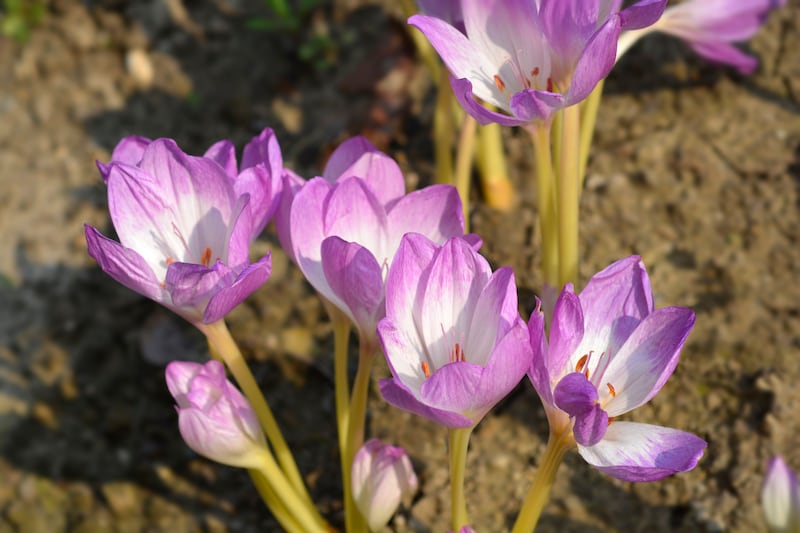
Hytotelephium spectabile ‘Brilliant’ aka the plant formerly known as Sedum spectabile ‘Brilliant’: Sometimes I wonder if taxonomists change the names of plants simply for the hell of it. Either way, this is a mouthful of a title for a popular, very hard-working hardy perennial that graces many an Irish flower border. Like so many late-flowering, sun-loving perennials, this stonecrop’s shortish, fleshy, dark mauve-pink flowers are also a magnet for bees and butterflies.
[ Think pink: It’s the colour of the year. Here’s how to nail itOpens in new window ]
This week in the garden
If you recently sowed seed of spring/early summer flowering biennials such as foxgloves, sweet William, wallflowers and honesty, then it’s time to thin out any seedlings direct sown in the ground or to prick out any raised in pots in order to produce strong, vigorous plants that will flower well next year.
While yellow rattle is considered a key species in the establishment or restoration of native Irish wildflower meadows, it’s inevitably very difficult to buy ripe, fresh, locally-grown seed of this hemiparasitic hardy annual. Instead, a much better solution is to harvest your own this month from plants growing locally, making sure to do so before the plant’s distinctive seed capsules start to spill their contents (these ‘rattle’ when ripe, hence the plant’s common name). Store the ripe seed in a labelled paper envelope in the fridge before sowing it in September- October.
Dates for your diary
Starting September 12th at Hunting Brook Gardens, Tinode, Blessington, Co Wicklow, gardener and author Jim Blake’s Plantsperson’s Course runs throughout one year as a series of one-day-a month-minicourses that includes garden visits, guest lectures, excellent notes and plenty of hands-on content with one of Ireland’s great garden-makers. See huntingbrookgardens.com for booking details.
[ Top 10 plants to bring a burst of colour to your gardenOpens in new window ]
Tuesday, September 26hth (7pm), White Sands Hotel, Portmarnock, Co. Dublin, D13 W7X2, an illustrated talk by the renowned American plantsman, nurseryman and author Dan Hinkley on behalf of Howth & Sutton Horticultural Society. This ticketed event (€15) must be reserved/booked in advance. See hshs.ie.
Dan Hinkley will also be one of the guest speakers at Kells Bay Gardens’ Southern Symposium (Friday, September 29th- Sunday, 30th September) along with Seamus O’Brien, Bleddyn and Sue Wynne-Jones, Jack Aldridge and Ken Cox. To reserve tickets for this three-day event, visit kellsgardens.ie.





















